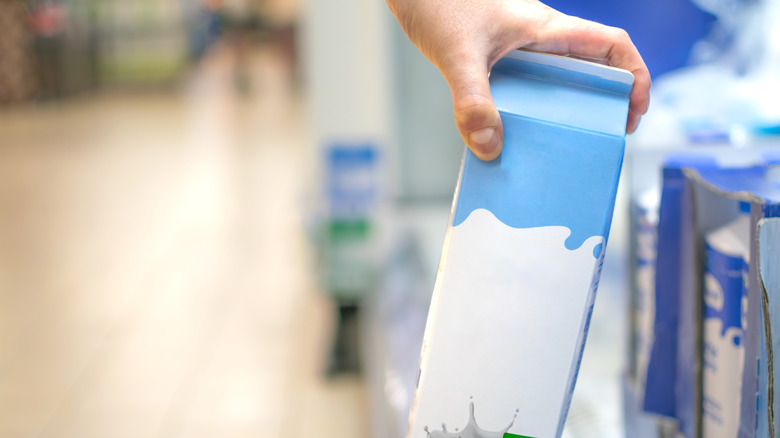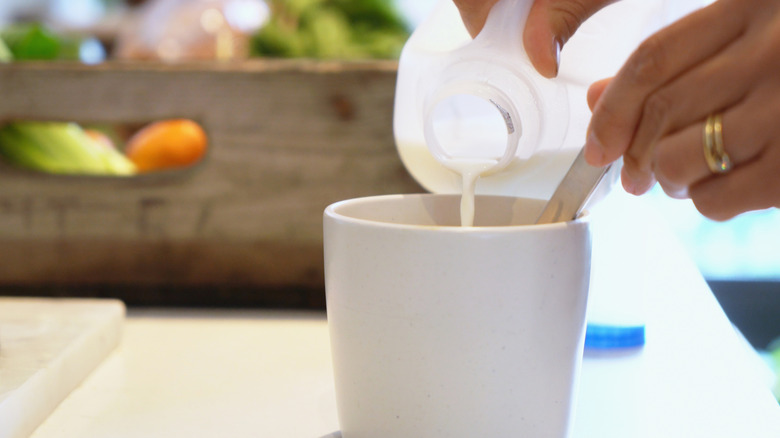What The 'Use By' Date On Your Milk Label Really Means
You feel something is off about your milk and hesitate to use it, even after it passes the sniff test, because it's three days past the use-by date. That label can trigger panic, even when the milk looks and smells fine, simply because it's unclear whether we should follow it to the letter or allow a little wiggle room. After all, no one wants to risk spoiled milk in their stomach. So, how serious is the use-by date, and more importantly, what does it really mean? Understanding the open and closing dates on carton labels helps. Open dating usually signals peak quality, while closed dating (terms like use by or best before) marks the production date. These aren't federally required except for dates on baby formula. In fact, the idea that every food label is or needs a government-mandated date is one of the biggest myths about expiration dates you should stop believing. Brands include it as a guideline, mostly to indicate when the milk was packaged, helping you decide how long you want to keep it after opening. So don't interpret it as being absolute. What's more useful to know is how long milk actually lasts.
According to the USDA, milk can be refrigerated for up to seven days and frozen for about three months. These guidelines generally refer to the sell-by or use-by date. In most cases, unopened milk stays fresh for five to seven days past the printed date. Once opened, especially if it's pasteurized, it usually lasts another two to three days beyond that. Raw milk, on the other hand, spoils faster. That's because it hasn't been heat-treated to kill off microbes, so its higher microbial count causes it to break down more quickly. This is why Costco's Kirkland milk takes longer to expire. The product goes through over 60 different microbial tests.
How to tell if milk has gone bad
While there may be some breathing room around the use-by date, don't push your luck; drinking spoiled milk, whether raw or pasteurized, can make you sick. There are a few simple ways to find out whether your milk has gone bad. Texture is often the first red flag. Fresh milk is white and smooth, so if you notice a yellowish hue or a lumpy, slimy consistency in your carton that's past the use-by date, it's likely gone bad. If the texture doesn't make it obvious, it's time for the sniff test. Fresh milk has little to no odor. So if you get a sour, rancid smell, it is a clear sign the milk needs to be tossed. If you're still unsure, take the smallest sip. Spoiled milk loses its natural mild sweetness and starts to taste sour or acidic. This should be your final cue to pour it down the drain. Sure, wasting milk stings a little, but not as much as a bout of food poisoning. You can take a few easy precautions to sidestep this the next time by stretching out the shelf life of the milk in that carton. First, don't leave your milk out of the fridge for too long; bacteria love a warm-up. And try to store it in the coldest part of the fridge.
If you happen to notice some red flags in milk that isn't past the use-by date, it's still a good idea to toss it. Like we've said, the date isn't a guarantee; it's more of a guide to help you make an informed choice. And while the use-by date on milk can be a little flexible, don't apply that logic to all foods. Some products should never be consumed past their expiration date, like ground meat or eggs. When it comes to milk, trust your instincts, use the information you have, and you should be good to go.

